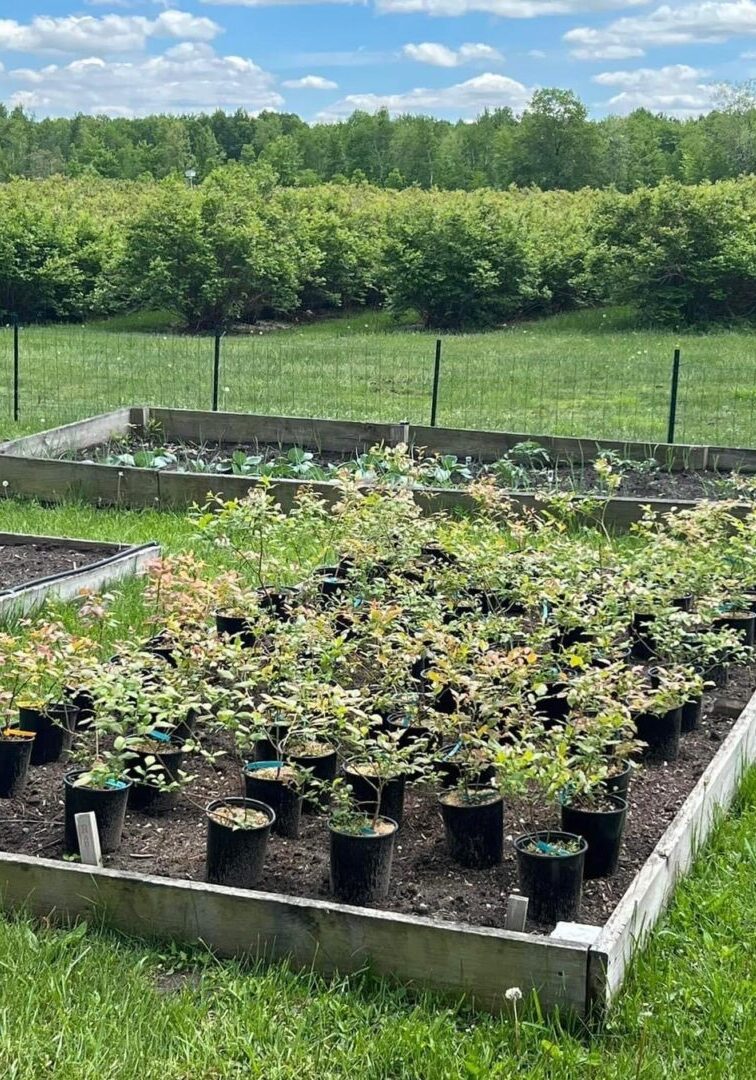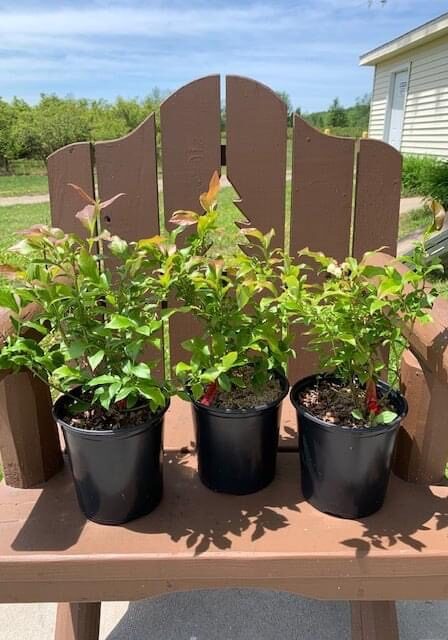Nursery
Blueberry Plants
Each spring, by appointment, we sell 2-year-old Northern Highbush blueberry plants in several varieties. These plants are cold hardy, virus tested, and can grow into 6-8 ft bushes (unless pruned). While blueberries are self-pollinating, we recommend planting two or more varieties together to facilitate cross-pollination. This helps produce bigger fruit.
How to plant and care for your new blueberry plants:
- The correct soil pH is very important for successful blueberry growing. Blueberries prefer soil on the acidic side (pH of 4.5 – 5.5). Ideally, check the pH of the soil and conduct any amendments, if necessary, up to one year before planting.
- Select a site that is well drained and does not seasonally flood or pool water. (Blueberries like moist, but not consistently wet roots.)
- Ensure your site is in full sun. Blueberries need at least 6 hours of sun per day.
- Plant blueberry plants 4-6 ft apart. As they grow to maturity, this spacing will allow sunlight to penetrate their leaves equally from all sides.
- Dig a hole at least 24” wide x 18” deep. The planting hole should contain at least 50% acidic organic mulch (peat moss, well-rotted sawdust, composted pine bark, etc.) Slightly mound the planting site to allow better drainage. Add 2-4” of mulch on top of mound to help conserve moisture and prevent weeds.
- Do not plant too deep. The blueberry plant should not be any deeper than the top of the root ball.
- Remove the fruit buds the first year. This can be easily done when the blueberry plant is in blossom. Using your fingers simply strip them off. This allows the plant to focus on root development (the most important thing at this stage), not its fruit.
- Apply fertilizer at the low rates. Use a fertilizer for “acid loving” plants such as azaleas or rhododendrons. We recommend something like a 4-3-3 or 4-3-4 mix of Nitrogen, Phosphorous, and Potassium (or Potash).
- Blueberry plants are susceptible to frost, deer, and rabbits the first few years. Cover plants (or bring pots inside) if those conditions exist.
- It is common for blueberry leaves to sometimes yellow. While this is likely a sign of iron deficiency, it’s probably not caused by a lack of iron in the soil. This symptom likely indicates that the soil pH is too high, and the blueberry plants cannot access the iron available in the soil. If you see yellowing leaves worsening, have the soil pH tested and make adjustments as necessary."


